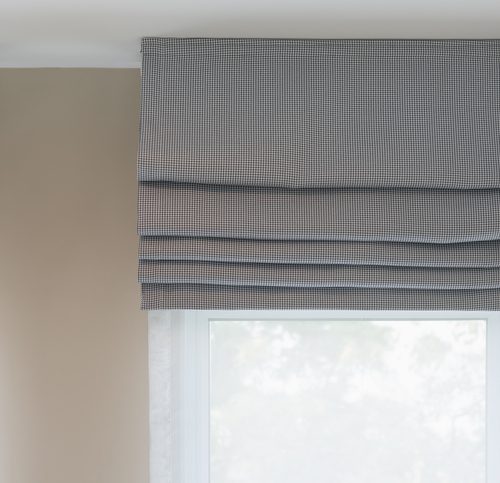
Honeycomb Shades Vs. Roman Shades: Choose Wisely
If you wish to enhance the interiors of your home, you should go for the right window treatment. From extravagant …
Learn More

People often refer to window treatments like shutters, blinds and shades interchangeably — yet these terms refer to distinct products with unique characteristics. Understanding what sets them apart is key to making an informed decision for your home.
This guide breaks down the differences between shutters, blinds and shades, helping you find the perfect fit for your windows and lifestyle.
Shutters are a classic and often permanent window covering option known for their sturdy construction and elegant appearance. They're typically made from wood, composite or vinyl and are installed directly into the window frame to blend seamlessly with existing architecture.
Shutters feature louvers that tilt open or closed to control privacy and light, and the entire panel can swing open for a full view.
Some of the key characteristics of shutters include:
Blinds are versatile window treatments characterized by vertical or horizontal slats or vanes that can be lowered, raised or tilted to control privacy and light. They are typically made from aluminum, wood, faux wood or vinyl and operate with cords or wands.
Some of the main features of blinds include:
Shades are typically made from a continuous piece of fabric or woven material that can be lowered or raised to cover the window. Unlike blinds, they do not have slats or vanes that can be tilted. Instead, they offer a soft and often elegant look. Depending on the fabric, they may provide light filtration or blackout capabilities.
Some attributes of shades include:
After understanding the difference between window blinds, shades and shutters, the next question is which one to choose. When it comes to selecting the ideal window treatment, the best choice ultimately hinges on your specific needs, lifestyle and aesthetic preferences. Each option offers a unique blend of benefits in terms of light control, privacy, durability and style.
By carefully considering the following aspects of your home's design and your personal requirements, you will be able to make an informed decision that improves the beauty and functionality of your living space.
Blinds are generally the most budget-friendly option, with a range of materials and styles available at different price points. Shades fall in the middle and also come in different varieties that affect the cost. Shutters are more competitively priced now, thanks to new materials, despite the upfront cost being larger in most cases. Their lasting value and potential energy savings make them a great choice for any home.
Each of these window treatments offers distinct aesthetic appeals. Shutters create a strong architectural statement and are often associated with traditional or upscale homes. Blinds offer a clean, structured look and can fit minimalist or modern interiors well. Shades are your go-to window treatment for a softer, more relaxed aesthetic that can easily blend with various design styles.
All three provide good light control and privacy in different ways. Blinds allow for precise light control, offering a range of options from fully open to completely closed. Shutters also provide excellent control, especially when directional light management is needed. Shades offer various light filtering options, from sheer to room-darkening, depending on the fabric and construction.
Shutters are the clear winner for longevity, often lasting for decades. Depending on their material and usage, blinds and shades have varying lifespans, but typically require replacement sooner than shutters.
Shutters are typically the easiest to maintain among blinds, shades and shutters. Their solid construction and wider slat spacing allow for simple wiping with a damp cloth.
Some blinds and shades can be more challenging to clean due to their many slats or fabric folds. Others, made of materials like faux wood or vinyl, are easier to care for.
In general, shutters offer the best energy efficiency. Plantation shutters are particularly effective at reducing heat loss and heat gain.
Shades, especially those with honeycomb designs, can also be energy-efficient. Blinds offer some insulation, but generally less than cellular shades or well-fitted shutters.
Choosing the right window coverings can transform your home's look and feel. At Colorado Shade and Shutter, we've been helping Denver homeowners enhance their living spaces with quality window treatments for years. From classic to contemporary, we offer a wide range of shutters, blinds and shades designed to meet diverse needs and styles.
When you work with us, you can expect quality products, expert advice and unmatched customer service. Let us help you transform your home with Norman window treatments that combine aesthetic appeal and practical benefits.
Contact us today for more information. You can also schedule an in-person showroom visit to see durable, beautiful, functional window coverings that enhance your living space.